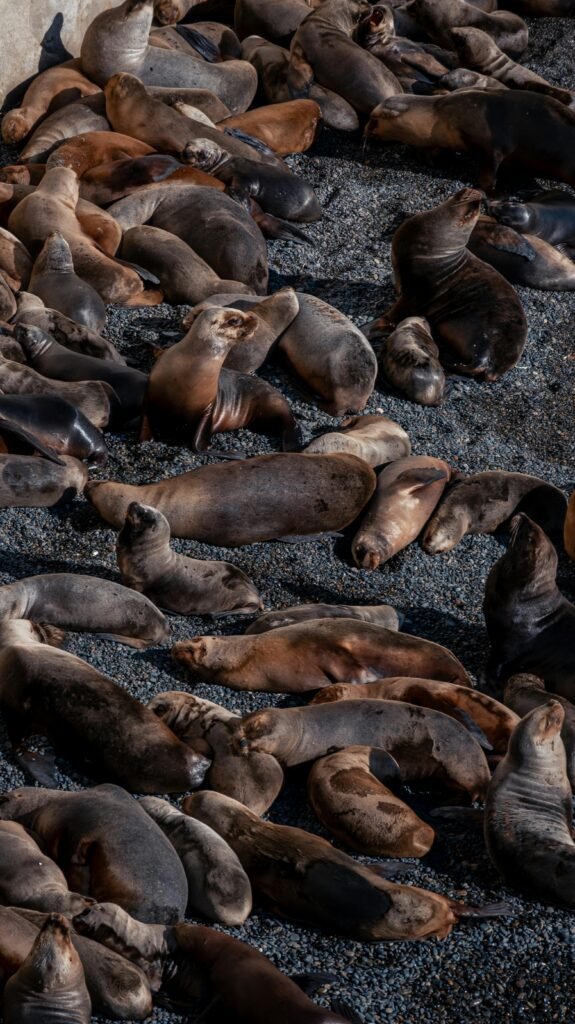You might not realize it, but the seal on your plastic food containers plays a crucial role in maintaining the freshness of your food. Airtight seals are essential for creating a barrier that prevents air and moisture from seeping into your containers, preserving the taste, texture, and quality of your food for a longer period. In this article, discover why airtight seals are so important and how they can make a significant difference in extending the shelf life of your favorite meals. So, let’s dive into the world of airtight seals and explore their impact on keeping your food fresher for longer.

This image is property of images.pexels.com.
What are airtight seals?
Definition
Airtight seals refer to the tight closure or barrier that prevents air from entering or escaping a container, ensuring that it remains airtight. These seals are commonly found in plastic food containers and play a crucial role in preserving the freshness, flavor, and aroma of the stored food.
Purpose
The main purpose of airtight seals is to create a barrier between the food and the surrounding air. By preventing air exposure, airtight seals help in maintaining the quality and freshness of the stored food. They also serve to extend the shelf life of perishable items and reduce food waste, ultimately saving both money and resources.
Importance of airtight seals for freshness
Prevention of air exposure
One of the key benefits of airtight seals is their ability to prevent air from coming into contact with the stored food. Exposure to air can lead to oxidation, which can degrade the quality of the food and cause it to spoil faster. Airtight seals act as a protective shield against air, preserving the taste, color, and texture of the food.
Preservation of flavor and aroma
Airtight seals are essential for maintaining the flavor and aroma of food. When food is exposed to air, it can absorb unwanted odors and lose its natural aroma. Airtight seals prevent this by sealing in the natural flavors and aromas of the food, ensuring that it tastes and smells as delightful as when it was first prepared.
Extended shelf life
By effectively sealing off the food from air and potential contaminants, airtight seals help extend the shelf life of perishable items. Oxygen, moisture, and airborne bacteria are the culprits behind food spoilage. Airtight seals minimize the contact between these spoilage factors and the food, allowing it to stay fresher for longer.
Reduced food waste
Food waste is a significant global issue, and airtight seals can play a crucial role in addressing it. By preventing premature spoilage and extending the shelf life of food, airtight seals help reduce food waste. This not only saves money for individuals but also contributes to a more sustainable and efficient food system.

This image is property of images.pexels.com.
Factors affecting airtightness
Quality of plastic
The quality of the plastic used in manufacturing food containers has a direct impact on the airtightness of the seals. Higher-quality plastics are more likely to maintain their seal integrity, effectively preventing air from entering or escaping the container. It is important to choose food containers made from durable and food-grade plastics to ensure the desired airtightness.
Design and construction
The design and construction of plastic food containers also influence their airtightness. Containers with well-designed lids and secure locking mechanisms are more likely to provide an effective seal. The improper alignment of container parts or inadequate locking mechanisms can result in air leakage, negatively affecting the airtightness and the freshness of the stored food.
Proper usage and maintenance
Even the best-quality plastic containers can lose their airtightness if not used and maintained properly. Airtight seals can deteriorate over time due to wear and tear or improper usage. It is important to follow the manufacturer’s instructions for proper usage and care, including avoiding harsh chemicals during cleaning and handling the containers with care to maintain their airtightness.
Benefits of using airtight plastic food containers
Protection against contaminants
Airtight plastic food containers act as a barrier against contaminants, such as dust, insects, and bacteria. By keeping the food sealed off from external elements, these containers ensure that the stored food remains safe and free from any potential contaminants, maintaining its freshness and quality.
Maintaining nutritional value
Certain nutrients in food can degrade when exposed to air or light. Airtight plastic food containers help preserve the nutritional value of the stored food by minimizing exposure to these elements. By keeping the food airtight, these containers help retain the essential vitamins, minerals, and antioxidants that contribute to a healthy diet.
Convenience and portability
Airtight plastic food containers offer great convenience and portability. They come in various sizes and shapes, making them suitable for different types of food. These containers are lightweight and easy to carry, making them ideal for on-the-go meals, packed lunches, or storing leftovers. The airtight seals ensure that the food stays fresh and contained, without any leakage or spills.
Versatility in storage
Airtight plastic food containers are incredibly versatile when it comes to storage. They can be used to store a wide range of food items, including leftovers, snacks, fruits, vegetables, and even liquids. The airtight seals make these containers suitable for both short-term and long-term storage, allowing you to keep your food fresh and organized.

This image is property of images.pexels.com.
Choosing the right airtight plastic food containers
Material considerations
When choosing airtight plastic food containers, consider the material used in their construction. Opt for containers made from food-grade plastics, such as polypropylene (PP) or high-density polyethylene (HDPE). These materials are safe, durable, and less likely to break or warp over time.
Sealing mechanisms
Different containers offer different types of sealing mechanisms. Some have snap-lock lids, while others may use twist-on or click-to-lock mechanisms. Consider the ease of use and reliability of the sealing mechanism when selecting containers. Look for ones that provide a secure and airtight seal to ensure the freshness of your food.
Size and shape options
Choose containers that suit your storage needs. Consider the size and shape options available, ensuring that they can accommodate the types of food you intend to store. Containers with various sizes and shapes will offer more flexibility in your food storage and organization.
Brand reputation and reviews
It is always helpful to consider the reputation of the brand and read reviews from customers before purchasing airtight plastic food containers. Look for brands known for their quality, durability, and airtightness. Positive reviews from users can give you confidence in the performance and reliability of the containers.
Tips for maintaining airtight seals
Proper cleaning and drying
Regular cleaning is essential for maintaining the airtight seals of plastic food containers. Use mild dish soap and warm water to clean the containers thoroughly. Avoid abrasive sponges or cleaners that can scratch or damage the seals. After washing, make sure to dry the containers completely before resealing or storing them to prevent moisture buildup.
Avoiding extreme temperatures
Extreme temperatures can affect the airtightness of the seals. Avoid subjecting plastic food containers to extreme heat or freezing temperatures, as this can cause the seals to expand or contract, compromising their effectiveness. It is best to store the containers in a cool, dry place away from direct sunlight and heat sources.
Replacing damaged seals
Over time, seals may become worn out or damaged, leading to decreased airtightness. Inspect the seals periodically for signs of wear and tear, such as cracks, tears, or loss of elasticity. If the seals are no longer providing a tight seal, it is important to replace them promptly to maintain the airtightness of the containers.
Storing containers correctly
Proper storage is crucial for maintaining the airtightness of plastic food containers. Stack the containers with their lids on to prevent any distortion or damage to the seals. Store them in an organized manner, with similar-sized containers nested inside each other to save space and maintain the integrity of the seals.
Common misconceptions about airtight seals
All containers are equally airtight
It is important to note that not all containers offer the same level of airtightness. Different brands and models may vary in their effectiveness in creating an airtight seal. It is important to choose containers specifically designed and marketed as airtight to ensure optimal freshness and storage.
Sealing guarantees freshness indefinitely
While airtight seals play a crucial role in preserving freshness, it is important to note that they are not a magic solution for indefinite freshness. The quality and freshness of the food being stored also play a significant role. Even with airtight seals, perishable items will eventually spoil and lose their freshness.
Plastic alternatives are better
Plastic food containers are often criticized for their environmental impact. However, it is important to note that plastic alternatives may not always provide the same level of airtightness and durability. It is essential to choose high-quality plastic containers that are reusable and recyclable to strike a balance between functionality and environmental consciousness.
How to test the airtightness of plastic food containers
Water submersion test
To test the airtightness of a plastic food container, simply fill it with water and close the lid tightly. Gently turn the container upside down or shake it to check for any leaks or water seepage. If no water escapes, it indicates that the container has a secure, airtight seal.
Pressurized air test
Another method to test the airtightness is by using pressurized air. Take an empty container and close the lid securely. Then, pressurize the container by blowing air into it through a straw or with an air pump. Observe if any air escapes or if there are any visible signs of air leakage, such as hissing sounds or bubbles.
Observing condensation
When storing cold or frozen food, condensation can indicate a lack of airtightness. If water droplets form on the inside of the container or on the food itself, it may indicate that the container is not airtight. The presence of condensation suggests that air is entering the container and affecting the stored food.
Innovations in airtight seal technology
Vacuum-sealing systems
Vacuum-sealing systems are a popular innovation that creates an airtight seal by removing the air from the container. These systems typically use vacuum pumps or electric sealers to eliminate the air, ensuring maximum freshness and prolonging the shelf life of the stored food.
Silicone gaskets and valves
Silicone gaskets and valves are components commonly found in airtight plastic food containers. These features help create a tight seal by compressing and providing an airtight barrier between the lid and the container. Silicon gaskets and valves are known for their durability and resistance to temperature changes, ensuring long-lasting airtightness.
Smart sensors and indicators
Advancements in technology have led to the development of smart sensors and indicators in some airtight containers. These sensors monitor the airtightness and freshness of the stored food, providing real-time feedback to the user. Some containers feature LED indicators that change color or alarms that alert the user when the airtightness is compromised.
Conclusion
Airtight seals in plastic food containers are essential for preserving freshness, flavor, and aroma. They prevent air exposure, extend shelf life, and reduce food waste. Factors such as the quality of plastic, design, and proper usage influence the airtightness. Choosing the right containers, maintaining them properly, and testing their airtightness are important steps. Plastic food containers with airtight seals offer protection against contaminants, maintain nutritional value, and provide convenience and versatility. While there are misconceptions surrounding airtight seals, understanding their benefits and innovations in seal technology can help in making informed choices. So, invest in high-quality airtight plastic food containers and enjoy the benefits of fresh and well-preserved food for longer periods.
